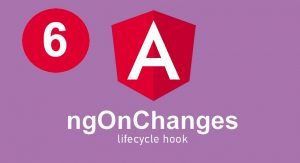What is a RESTful Web Service? It is just a way in which various applications can communicate with one another on the web, based on rules referred to as REST. REST is an acronym for Representational State Transfer and was coined by Roy Fielding in 2000. RESTful web services are one of the most widely used ways to create APIs because they are easy, quick, and convenient.
They are constructed based on shared web technologies, i.e., HTTP, and thus are flexible and well-supported. You should know them if you want to work or develop modern web and mobile applications efficiently.
Core Principles of REST Architecture
REST architecture is based on a few clear rules. First is statelessness, meaning each request from a client contains all the information needed, and the server does not store session data. This makes scaling much easier. Another important principle is client-server separation, which means the user interface and the server logic are independent.
REST also follows a uniform interface, which ensures that all resources are accessed in a consistent way. It supports caching, which improves performance. It uses a layered system for security and scalability. A less common but still valid rule is code on demand, where servers can send executable code to clients when needed.
You will Like : JavaScript | Working with Objects | Angular
Essential Components of a RESTful Web Service
A RESTful web service is built from key elements. The most important is the resource, which represents the data or object being accessed. Each resource is identified by a unique URI. Developers use HTTP methods to perform actions on these resources, such as GET, POST, PUT, DELETE, PATCH, and OPTIONS.
The format of the data sent is called the representation. JSON is the most common format, but XML and HTML are also used. HTTP status codes give feedback on what happened, like 200 for success or 404 for not found. Headers carry metadata, such as the type of content or authentication details.
Common HTTP Methods in RESTful APIs
| Method | Purpose | Example Use |
| GET | Retrieve a resource | Get user profile |
| POST | Create a new resource | Add a new product |
| PUT | Update a resource | Edit an existing blog post |
| DELETE | Remove a resource | Delete a comment |
| PATCH | Partial update of resource | Change one field in a record |
How RESTful Web Services Operate
A RESTful service works using a request-response cycle. The client sends a request using a specific HTTP method to the server. The server processes the request and returns a response. This response includes a status code, headers, and the resource representation, usually in JSON format.
REST maps HTTP methods to CRUD operations. GET is for reading data, POST for creating data, PUT for updating, and DELETE for removing. For example, if you visit a URL like /users/1, the server might return the details of user with ID 1 in JSON form.
Advantages of RESTful Web Services
\
One of the main benefits is scalability. Since they are stateless, servers can handle many requests at once. REST APIs also work across different programming languages and platforms. They are lightweight, which means they use less bandwidth and process faster.
Another big advantage is caching. Data that does not change often can be stored and reused, reducing server load and improving speed. REST also integrates easily with web browsers and mobile apps because it uses standard web protocols.
REST vs SOAP Comparison
| Feature | REST | SOAP |
| Format | JSON, XML, HTML | XML only |
| Performance | Fast and lightweight | Slower, more overhead |
| Learning Curve | Easier for beginners | More complex |
| Caching | Supported | Not supported directly |
| Flexibility | High | Lower |
Real-World Use Cases of RESTful APIs
REST APIs are everywhere. Social media platforms like Twitter, Facebook, and Instagram use them to allow apps to post updates or fetch data. E-commerce websites use REST APIs to connect with payment gateways, shipping services, and inventory systems.
Mobile applications rely heavily on RESTful APIs to sync user data with cloud servers. In IoT, smart devices use REST APIs to communicate with control systems. Even streaming services like Netflix use RESTful services to deliver content efficiently.
Read More About : Understanding Bootstrap in Angular
REST vs Other Web Service Protocols
Compared to SOAP, REST is simpler, faster, and more flexible. SOAP is strict and requires XML, while REST can use multiple formats. When compared to GraphQL, REST is more predictable but may return extra data, known as over-fetching. GraphQL solves this by allowing clients to request only what they need.
REST and gRPC differ in performance. gRPC is faster for internal microservice communication because it uses a binary protocol, but REST is easier to implement and more compatible with browsers and devices.
Best Practices for Designing RESTful APIs
Good REST APIs have clear and consistent resource names. Endpoints should use nouns, not verbs, and follow a logical structure. Status codes must match the outcome of the request to avoid confusion.
Security is critical. Use authentication and authorization methods like OAuth 2.0 or JWT. APIs should be versioned to prevent breaking changes for existing clients. Documentation, often done with OpenAPI or Swagger, ensures developers can use the API without guesswork.
REST API Design Best Practices
| Practice | Description |
| Resource Naming | Use nouns and clear paths |
| HTTP Status Codes | Match correct responses |
| API Versioning | Prevent breaking existing clients |
| Authentication | Use OAuth 2.0 or JWT |
| Documentation | Provide clear usage instructions |
Common Challenges and Pitfalls
One problem is making endpoints too complex. Simple, logical structures are easier to maintain. Inconsistent HTTP method use can cause errors and confusion.
Another common issue is skipping version control, which can break apps when changes are made. Poor error handling can make APIs frustrating for developers. These mistakes reduce usability and reliability.
FAQ” S
What is the main purpose of a RESTful Web Service?
It allows different applications to communicate over the web using standard HTTP methods and formats like JSON.
Is REST a protocol or an architecture?
REST is an architectural style, not a protocol. It uses constraints to guide API design.
Can RESTful Web Services use XML?
Yes, although JSON is more common, REST can return XML, HTML, or any other format.
What makes RESTful APIs faster than SOAP?
They are lightweight, use less bandwidth, and have fewer processing requirements.
Do all RESTful APIs need authentication?
Not all, but most require authentication for secure data access and operations.
Conclusion
What is a RESTful Web Service? It is a fast, scalable, and flexible way for systems to communicate using web standards. By following REST principles and best practices, developers can build APIs that are reliable and easy to use. REST remains a top choice for modern applications because it works well with browsers, mobile apps, and connected devices. As technology evolves, RESTful APIs will continue to play a key role in powering the web and beyond.




